Aims & Activities
The aims of the BES quantitative ecology special interest group are to facilitate networking around, and communication of, quantitative aspects of ecology; helping its members obtain advice, learn, apply good practice and collaborate.
The group:
- Runs the quantitative ecology mailing list and a monthly newsletter,
- Identifies and, if necessary, organises training opportunities (workshops)
- Organises an annual event at the British Ecological Society Annual Meeting, either to support general networking or on a specific theme
- Organises the provision of advice on quantitative ecology, and supporting the application of good practice, through online resources
Committee
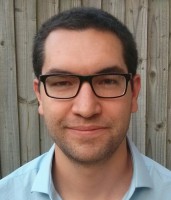 Nick’s twitter bio says he’s a ‘computational disease ecologist’, which is another way of saying he likes ecology, computational statistics and epidemiology too much to focus on any one thing. He’s a post-doc at the Spatial Ecology and Epidemiology Group at the University of Oxford and has been on the SIG committee since 2013.
Nick’s twitter bio says he’s a ‘computational disease ecologist’, which is another way of saying he likes ecology, computational statistics and epidemiology too much to focus on any one thing. He’s a post-doc at the Spatial Ecology and Epidemiology Group at the University of Oxford and has been on the SIG committee since 2013.
Twitter: @_NickGolding_
Susan Jarvis – Deputy Secretary/Education & Training Rep
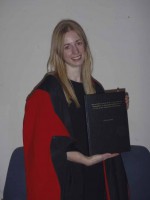 Susan is a research associate at the Centre for Ecology and Hydrology in Lancaster focusing on quantitative ecology. She is interested in understanding the processes behind species distributions, diversity and community composition and use a range of methods including niche modelling and structural equation modelling. Her other interests include multivariate statistics, Bayesian approaches and occupancy modelling. Susan’s background is in fungal ecology but she currently works mostly on plants, with a focus on UK flora.
Susan is a research associate at the Centre for Ecology and Hydrology in Lancaster focusing on quantitative ecology. She is interested in understanding the processes behind species distributions, diversity and community composition and use a range of methods including niche modelling and structural equation modelling. Her other interests include multivariate statistics, Bayesian approaches and occupancy modelling. Susan’s background is in fungal ecology but she currently works mostly on plants, with a focus on UK flora.
Twitter: @susanjarvis501
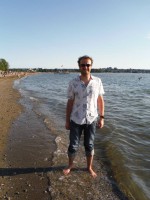 Rick is a Principal Academic in Computational Ecology at Bournemouth University. His
Rick is a Principal Academic in Computational Ecology at Bournemouth University. His
research involves the application of statistical and computational techniques to a wide variety of systems, particularly the structure of marine communities. Rick is interested in identification of novel biomarkers, and how these can be linked to changes in community structure; and also in the development of models with simple and intuitive interfaces, which can be used in topics as diverse as policy, management or education.
Twitter: @rick7575
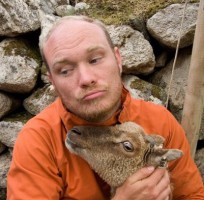 Dylan is a population biologist with interests at both the pure and applied ends of the spectrum. He follows an interdisciplinary approach, developing data-driven models to understand population dynamics and natural selection in laboratory and free-living populations. He is particularly keen to understand how demographic, environmental and ecological processes interact to shape selection on life histories. He is also interested in developing theory and applications for modelling structured populations.
Dylan is a population biologist with interests at both the pure and applied ends of the spectrum. He follows an interdisciplinary approach, developing data-driven models to understand population dynamics and natural selection in laboratory and free-living populations. He is particularly keen to understand how demographic, environmental and ecological processes interact to shape selection on life histories. He is also interested in developing theory and applications for modelling structured populations.
Twitter: @dylan_childs
Miriam Grace – Policy and Industry Rep
 Miriam has an MRes in Environmental Biology from the University of St. Andrews and is now a computational biologist. She currently works as a postdoctoral research associate at Jacobs University Bremen (Germany), researching spatiotemporal pattern formation. Miriam also participates in science communication initiatives as a graphic artist. Apart from ecology, her interests include science outreach and policy.
Miriam has an MRes in Environmental Biology from the University of St. Andrews and is now a computational biologist. She currently works as a postdoctoral research associate at Jacobs University Bremen (Germany), researching spatiotemporal pattern formation. Miriam also participates in science communication initiatives as a graphic artist. Apart from ecology, her interests include science outreach and policy.
Angela Watkins – Policy & Industry Rep
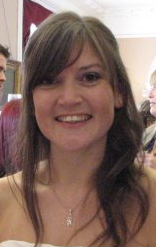 Angela is a landscape ecologist with an interest in ecosystem resilience and conservation. She has a PhD in complexity science and ecology from the University of Southampton and currently works as Evidence Advisor for the Welsh Government. In her current position, Angela is responsible for supporting a range of policy portfolios across the Natural Resources remit through development of an appropriate evidence base. She is interested in developing and strengthening the science-policy interface and is particularly keen to promote the use of applied quantitative and computational methods in developing our understanding of the way ecosystems work, respond and adapt in the wider socio-economic-environmental context.
Angela is a landscape ecologist with an interest in ecosystem resilience and conservation. She has a PhD in complexity science and ecology from the University of Southampton and currently works as Evidence Advisor for the Welsh Government. In her current position, Angela is responsible for supporting a range of policy portfolios across the Natural Resources remit through development of an appropriate evidence base. She is interested in developing and strengthening the science-policy interface and is particularly keen to promote the use of applied quantitative and computational methods in developing our understanding of the way ecosystems work, respond and adapt in the wider socio-economic-environmental context.
Chris Clements – Social Media Rep
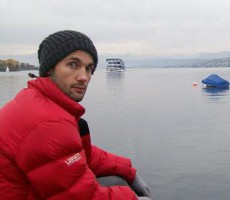 Chris is a post-doc at the University of Zurich, working on early warning signals of population collapse, as well as the effects of climate change on parasites, and the distribution of extinct sharks. Chris’s main interests are the extinction of species and populations, which he investigate using a combination of mathematical models, microcosm experiments, and analysis of real world population data. He counts himself as an experimental conservationist, although given he made that term up that probably doesn’t matter too much.
Chris is a post-doc at the University of Zurich, working on early warning signals of population collapse, as well as the effects of climate change on parasites, and the distribution of extinct sharks. Chris’s main interests are the extinction of species and populations, which he investigate using a combination of mathematical models, microcosm experiments, and analysis of real world population data. He counts himself as an experimental conservationist, although given he made that term up that probably doesn’t matter too much.
Twitter: @CClements88
Duncan Procter – Education & Training Rep
 Duncan is a PhD student at the University of York working on wood ants on the North York Moors and the effects of the creation of large areas of plantation forest on them. He is a fairly broad-minded ecologist with work going from landscape scale patterns and habitat suitability modelling to population genetics and evolutionary ecology. Essentially anything he can investigate that involves insects is good to him.
Duncan is a PhD student at the University of York working on wood ants on the North York Moors and the effects of the creation of large areas of plantation forest on them. He is a fairly broad-minded ecologist with work going from landscape scale patterns and habitat suitability modelling to population genetics and evolutionary ecology. Essentially anything he can investigate that involves insects is good to him.
Twitter: @DuncanProcter
Dominic Bennett – Online Resources Coordinator
 Dominic is a PhD student in macroevolution, macroecology and conservation biology based at Imperial College London and the Zoological Society of London. Previous to that he was a masters student also based at Imperial working on the PREDICTS project.
Dominic is a PhD student in macroevolution, macroecology and conservation biology based at Imperial College London and the Zoological Society of London. Previous to that he was a masters student also based at Imperial working on the PREDICTS project.
Twitter: @dominicjbennett
Simon Dellicour – Online Resources Coordinator
 Simon’s current work focusses on the development and applications of new methodology to compare viral genetic information and ecological landscape data in order to statistically test for significant associations between viral movement and underlying ecological variables (e.g. population density, elevation, etc). He is also generally interested in in animal/plant/virus phylogeography, population, spatial and landscape genetics.
Simon’s current work focusses on the development and applications of new methodology to compare viral genetic information and ecological landscape data in order to statistically test for significant associations between viral movement and underlying ecological variables (e.g. population density, elevation, etc). He is also generally interested in in animal/plant/virus phylogeography, population, spatial and landscape genetics.
Twitter: @ecologywatkins
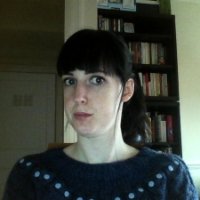 Laura is a spatial/computational ecologist who is interested in what impacts environmental changes have on species’ distributions and how we can use this information in landscape and conservation planning to reduce detrimental effects. In a previous career, Laura was a mathematician and database developer, and applies skills learned there to answer ecological questions.
Laura is a spatial/computational ecologist who is interested in what impacts environmental changes have on species’ distributions and how we can use this information in landscape and conservation planning to reduce detrimental effects. In a previous career, Laura was a mathematician and database developer, and applies skills learned there to answer ecological questions.
Twitter: @laurajanegraham
Contact
You can follow the special interest group on twitter, like us on facebook or sign up to the mailing list for regular updates. You can also get in touch with the committee by email.

Pingback: Introducing the Committee | BES Quantitative Ecology Blog